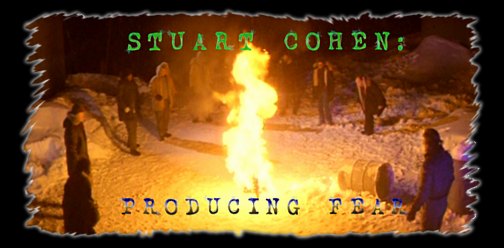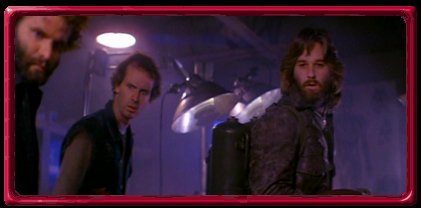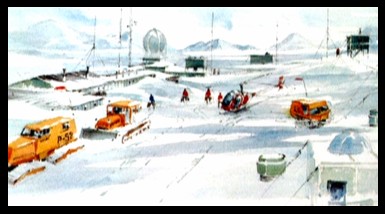

Producer Stuart Cohen had done a number of television movies, such as the
Richard Donner's well know Sarah T - Portrait Of A Teenage Alcoholic, in the 70s.
He always intended to try his hand with motion pictures, and landed a dozy with
The Thing. Cohen was a fan of sci fi and fantasy since he was a child, so it was
a logical step onto the big screen. He landed the co-producer credit, with
veterans David Foster and Lawrence Turman taking primary producer chores. It was
Cohen's friendship with John Carpenter that made his big splash happen in the
first place. 
"John and I first talked about this project close to six years ago," Cohen recalled. "We were sitting in Bob's Big Boy Restaurant on Vine Street in Hollywood. We agreed it would be a wonderful idea to make a movie that was more faithful to the story. We thought that to just remake it wouldn't do the picture or ourselves justice, because we liked it so much. I first read the story when I was a kid and thought it was phenomenal. For some reason Hawks chose not to focus on the story's concept, which was the chameleon nature of the monster being able to masquerade as any life form at an isolated Antarctic research camp. Even so, I think his film is wonderful fun. The suspense is very well generated, the performances have great spirit and energy, and the movie really does move. It's very terrifying, has great style, and holds up well."
As Cohen explained, director Carpenter went into The Thing simply as a director, and not as a writer, for the first time in his young career. "John was very strongly committed to not writing the script. I think he realized how structurally difficult it would be to make a satisfactory screenplay out of the story. The theme of the story and movie is the monster in all men. That’s very difficult to convey when you’re dealing with descending levels of paranoia, where the line between reality and surreality becomes erased. John felt it would take a year to do the script and didn’t have the time to commit."
With Carpenter not scripting, he and Cohen put together a list of successful screenwriters who could possibly join the project. Among those on the list Ron Koslow (who went on to create the acclaimed series Beauty And The Beast), legendary genre author Richard Matheson, and famed veteran Ernest (North By Northwest) Lehman. "We had two ways to go," said Cohen. "We could have gone for a top notch science fiction writer like Matheson. On the other hand, we never felt it was necessary to hire a writer steeped in the genre. We thought it might be more interesting to find a very good writer who loved the genre but had never written for it, and therefore might be a little fresher."
Eventually it was Bill Lancaster, who had wrote the hit
comedy The Bad News Bears, who got the job. "We'd
met previously about another project. I had an instinct about him. He's a very
good, structured young writer who'd always wanted to write a film like this. He
read the story and immediately grasped what John and I saw in it. Also he struck
me as someone who'd work very well with John, especially considering that John
had never before worked with a screenwriter who wasn't also a personal friend of
his."
As the first draft of Lancaster's script was accepted by Universal and in early stages of pre-production, Cohen joined production designer John Lloyd in searching for filming locations. "It fell to Loyd to begin scouting locations in the Northern Hemisphere that could duplicate the Antarctic. He scouted most of Eastern Canada, Montana and Colorado, but we couldn't be guaranteed enough show there. We settled on two locations -- Juneau, Alaska, and Stewart, British Columbia. Lloyd and I went to the Juneau Ice Field, which is 1,4000 square miles of glacier about 5,000 feet above Juneau, and is only accessible by helicopter doing certain months of the year. We made five helicopter attempts to get in before we succeeded."
"The cold was intense," Cohen remembered. "We shot day and night, and the temperature ranged from 40° to about -15°. We had to weatherproof as much of our technical equipment as possible. A special plastic encasing with hand warmers inside was built for the sound equipment, so we could record production sound. We also spent aboard $75,000 just to wardrobe the crew to keep them warm."
Stuart Cohen, who moved back into television following The Things' release, was clearly proud of his movie in 1982, and hoped audiences would also take to it as well. "It seems to work as adventure, mystery, horror and science fiction. It's definitely very scary, and but it scares people in the right way. I think the audience will enjoy being scared -- and I'm hoping they'll come back to be scared again." *